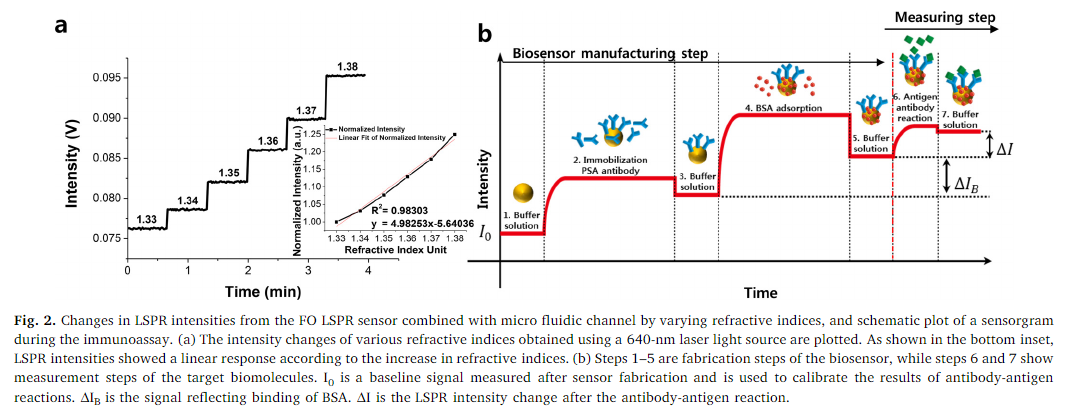LSPR sensor
Localized surface plasmon resonance(LSPR) is a phenomenon that when light enters a metal nanoparticle, free electrons on the surface of the metal nanoparticle are excited and collectively oscillation. When the LSPR phenomenon occurs, light scattering occurs. The LSPR phenomenon can be controlled by the type, shape, density, arrangement and so on of the metal nanoparticles, making it possible to manufacture a more sensitive sensor.
Using the LSPR phenomenon, it is possible to measure the wavelength shift or the intensity shift when the object to be measured reacts. Also, LSPR is sensitive to changes in refractive index. By using the characteristics of LSPR, it is possible to measure quantitative changes such as antigen antibody reaction and protein binding on the metal surface.
In order to increase the reliability of LSPR sensor, we have combined the microfluidic channel and measured the antigen antibody reaction of pathogenic bacteria such as prostate specific antigen(PSA) and thyroglobuline(Tg).

